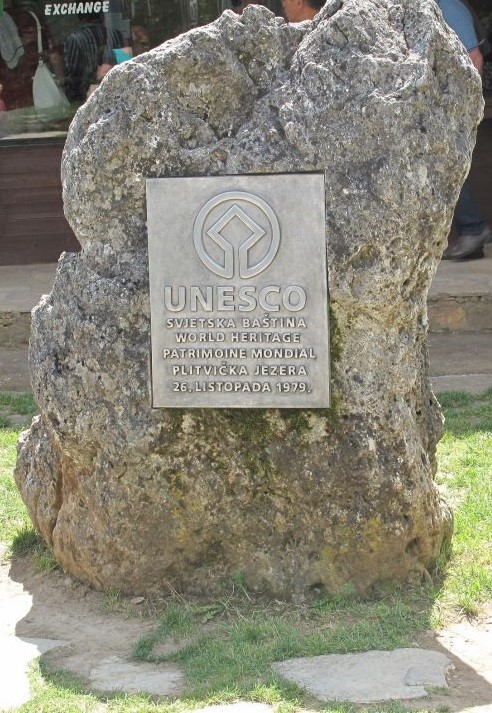In addition to its 70th anniversary of being declared a protected area, in 2019 the Plitvice Lakes National Park is also celebrating 40 years since its inscription on the UNESCO World Heritage List. This momentous achievement occurred on 26 October 1979, when the World Heritage Committee (WHC) inscribed the nominated Plitvice Lakes National Park on the World Heritage List as the only natural heritage site at that time.
It should be noted that this inscription of the national park on the List occurred a few years after adopting the Convention Concerning the Protection of the World Cultural and Natural Heritage (1972), and just one year after the first inscription of a cultural and natural heritage site (when Yellowstone National Park and the Galapagos Islands were inscribed as natural heritage sites). The Convention was ratified by 24 countries in 1976, and by 2017 that number reached 193 States Parties. One of the more significant considerations and grounds for the adoption of the Convention was the statement that “deterioration or disappearance of any item of the cultural or natural heritage constitutes a harmful impoverishment of the heritage of all the nations of the world”! Today, a total of 1092 sites can be found on the World Heritage List, 209 of which are natural heritage sites. The largest number of sites on the List (514 of them) can be found in Europe and North America.
To be included on the World Heritage List, sites must be of outstanding universal value, i.e. each site has to justify this value by meeting at least one of a total of 10 criteria. Until 2004, these criteria were divided into six cultural and four natural criteria (from (i) to (iv)). With the adoption of the revised Operational Guidelines for the Implementation of the World Heritage Convention, they became a single set of ten criteria (natural criteria are since then marked with numbers from (vii) to (x)). Each criterion has its own description and today’s sites have to meet at least one of the mentioned criteria, although more often than not, they cover more than one.
In April 1979, the United Nations Educational, Scientific and Cultural Organization (UNESCO) received a proposal for the nomination of the Plitvice Lakes National Park for inscription on the World Heritage List. The description of the site, its historical characteristics, geological features and the most important part of the document, the reasons to be included on the World Heritage List, was drawn up on behalf of the Plitvice Lakes National Park by Aleksandar Brnek-Kostić, working together with engineer Stahan from the Republican Institute for Nature Protection in Zagreb. When describing tufa barriers separating the river valley, as well as the biological and ecological conditions necessary for the formation of the tufa barriers, authors also talk about well-preserved forests and an abundance of fauna. The nomination proposal was accompanied by various maps (geological maps, soil maps, phytocenological maps, longitudinal profile of the lakes) and photographic documentation. As is the practice today when revising proposals for inscription on the World Heritage List, the opinion on the proposal is submitted by the International Union for Conservation of Nature (IUCN). It was concluded that the Plitvice Lakes National Park should be inscribed on the World Heritage List primarily because of the “undisturbed tufa formation” which forms the landscape character and hydrological system. This process completely meets criterion (ii) relating to the constant development of plant and animal communities, land forms, and marine and freshwater bodies. As secondary reasons for inscription, IUCN highlighted the criterion which covers interactions between humankind and its natural environment, and criterion (iii) as an exceptional combination of cultural and natural elements.

Today’s criteria according to which the Plitvice Lakes National Park is recognised as an outstanding universal value, are criteria (vii), (viii) and (ix).
The new Management Plan establishes that the “interaction between water, air, the geological substrate and organisms, and thanks to special physicochemical and biological conditions, enabled the formation of tufa that has dammed the watercourse to create a series of lakes, barriers and waterfalls. The combination of these processes and their unique ecology, as well as the exquisite beauty of the area, represents outstanding universal value.”
The vision of this largest and oldest national park implies a future in which it is still a UNESCO World Heritage Site, which definitely includes the preservation of outstanding universal value and the criteria that describe it. Now, as well as in years to come, it is necessary to understand the value of Plitvice Lakes, not just as natural heritage of exceptional significance for Croatia, but also as globally important heritage.

Read other interesting stories from the Plitvice Lakes National Park

